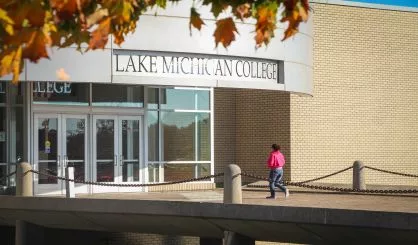The theory is that if the infrastructure of Michigan’s deteriorating roads and bridges can be resolved and managed well, we all win. As the Michigan Department of Transportation prepares to pour additional dollars into the state’s infrastructure over the coming years thanks to action by the government in recent years to allocate more dollars to the cause, theory will have a chance to become reality.
For the folks at MDOT, they have long held the view that infrastructure management is best performed as a team effort. The good news is a new initiative spurred by MDOT’s Bureau of Bridges and Structures has brought that view into reality, offering local agencies the opportunity to team up and test out new maintenance strategies alongside state experts.
By way of example, last April, MDOT was contacted by the St. Clair County Road Commission (SCCRC) in search of a new solution to repair deteriorated joints on the Pine River Bridge on Kilgore Road. The bridge was originally constructed in 1989. While the joint repairs are necessary to preserve the pavement surface and overall life expectancy of the bridge, the typical solution for this type of repair has been found to have limited capabilities and result in premature cracking making future maintenance inevitable.
Both MDOT and its local agency partners are continuing efforts to develop long-term construction and maintenance efforts for infrastructure, and this scenario was ideal for an experimental product. The road commission reached out to MDOT in search of a high-performance concrete product, and agreed that the location was ideal to try a new product that had undergone extensive lab testing, including one field trial the previous year.
In August, the road commission was joined by MDOT and the University of Michigan in testing the new high-performance concrete. All components of the concrete were carefully measured and mixed on-site before being applied to forms along each joint being replaced. The University of Michigan collected several samples of the concrete, which were taken to the lab for extensive testing. The road commission was left with fresh joints, and the entire bridge was then finished with a new asphalt overlay and waterproofing sealant. While the concrete product was found to be successful, arguably the most positive outcome was the partnership between two agencies that promoted the use of a new product, and included additional on-site manpower to assist in implementing that product.
The partnership is part of the overall goal and intention of the MDOT Bureau of Bridges and Structures. By partnering with local agencies, products, equipment, resources, and staff can be shared to help control costs and develop alternative maintenance strategies that may otherwise have gone unused.
The use of this concrete product is just one of the recent initiatives employed by Jason DeRuyver, a manager within the Bureau of Bridges and Structures. DeRuyver says, “We’re excited to partner and share what we know about maintenance and different experimental products with local agencies that might not have access to those resources.”
In recent months, DeRuyver has made contact with road commissions and public works departments across the state, hoping to extend an invitation to partner for educational purposes should the opportunity arise. This includes answering any questions local agencies may have about their own upcoming maintenance. In addition, DeRuyver has also extended invitations to surrounding local agencies in the event that MDOT staff have an upcoming specialized maintenance project. He notes, “Teaching local agencies about these new tactics and products will help them be more efficient in their own area, and they may even realize a product or repair method we are using is actually ideal for some of their own infrastructure maintenance.” Additionally he notes, “Transportation budgets are going to remain tight in comparison to the work we still have to do, so any opportunity to educate other staff through job shadowing will be a benefit to those agencies, and one that won’t cost their agency much in the long run.”
For his part, St. Clair County Road Commission manager DeWayne Rogers says, “MDOT was extremely helpful in our joint repair project.” He adds, “They were part of the process from beginning to end. There were several hurdles to get through lining up all the materials, equipment and labor. When time for construction arrived, they were there to guide and assist all the way. The project was a success and we look forward to taking the know-how we gained and building on it for next season.”
In recent months, road agencies have begun to trouble shoot through DeRuyver and his unit. Most recently they assisted the St. Joseph County Road Commission in strengthening a nail-laminated timber bridge. Local agencies in search of advice, direction, or additional education for bridge maintenance projects are encouraged to reach out to DeRuyver by e-mail at deruyverj@michigan.gov.
In the photo accompanying this story on Moody on the Market.com, Pine River Bridge joints have been freshly poured and plywood is placed on top to help create a smooth finish.






